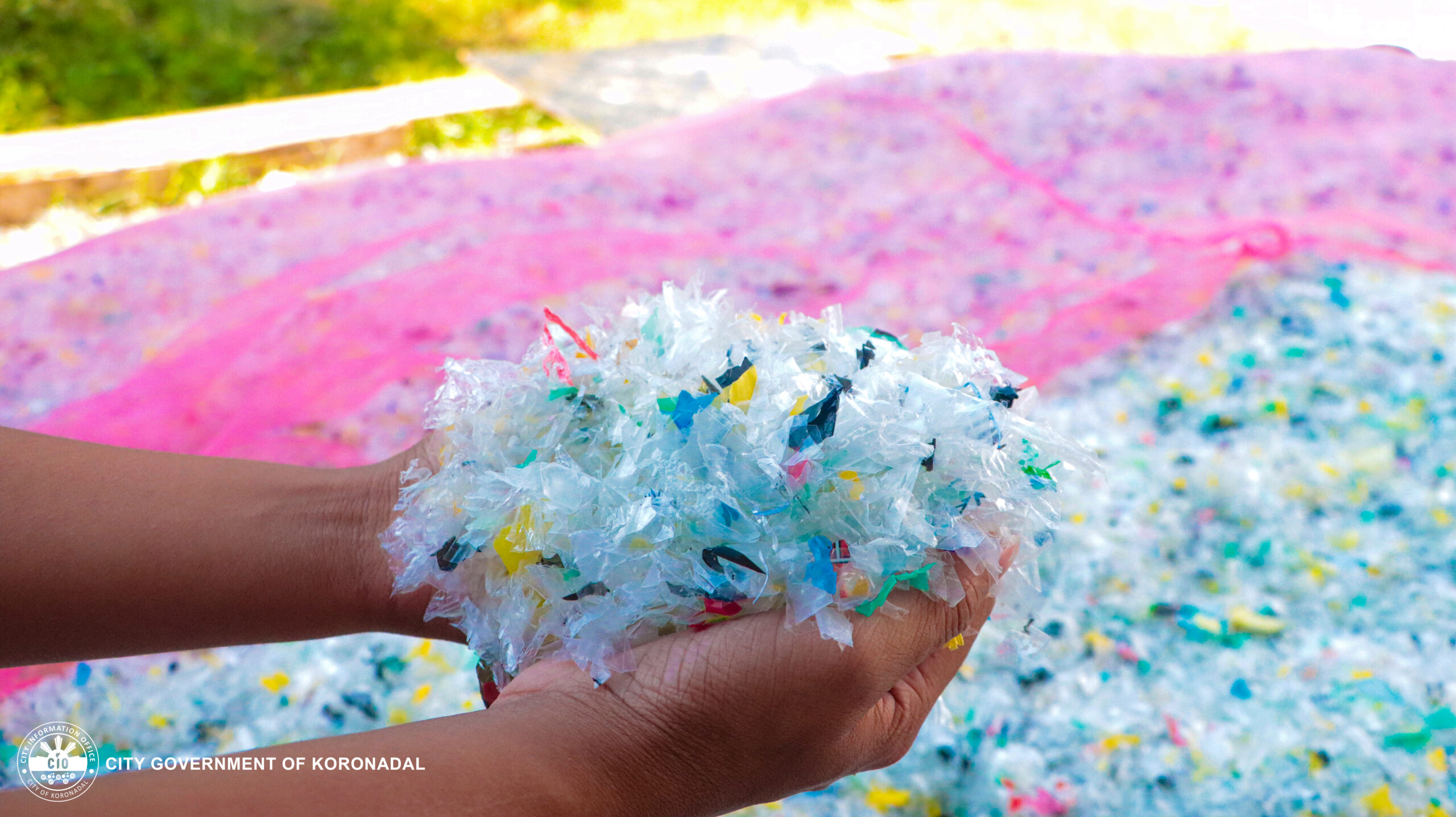KORONADAL OPERATES PLASTIC RECYCLING FACILITY

Plastics have become an integral part of our daily lives. Plastic will always be here and everywhere, whether we like it or not. Plastic can be found in a variety of places in today’s world, including our own homes, workplaces, gadgets, automobiles, and even in our food. Since we are surrounded by plastic, it cannot be easily removed.
The use of these wastes has alarmingly increased. Undeniably, they have become a huge problem that is confronting every local government units in the country today.
However, with the collective efforts of the local government unit of the City of Koronadal, led by City Mayor Eliordo U. Ogena and its lead office, the City Environment and Natural Resources Office (CENRO), it has finally found a way to reduce the proliferation of plastic waste that just ends up decaying and rotting in the city’s SLF.
In August of this year, the city government of Koronadal launched its Plastic Recycling Facility, where recyclable plastics such as candy wrappers, shopping bags, plastic straws, plastic sachets, and junk food packaging, among others, were turned into more valuable and useful plastic products. They were molded and transformed into plastic arm chairs, plant boxes, stools, and soon, into alcohol dispensers, bricks, plastic boards, and a variety of other products.
In his message, CENR Officer Augustus Bretaña said that the plastic recycling facility has been in the city’s SLF for quite some time, but due to the pandemic, there was a delay in its operation.
“Actually, this is already long overdue program of the City ENRO. This could have been operated three years ago if not for the COVID”, Bretaña admitted.
Bretaña also stated that it is high time that the plastic recycling facility be utilized since the generation of SLF’s Cell No. 2 was quite alarming. Earlier, he projected that the second SLF would be filled up after ten years. However, with the conduct of various festivities and the rise of housing projects in the city, there was a sudden increase in garbage generation.
“This is the reason why I instructed Engr. Lebanan to jumpstart the operation of the plastic recycling facility because this is a way to reduce [the garbage] and with this intervention, the SLF’s second cell will be extended by up to ten years…Somehow, it can help lessen the garbage generation by at least 50%, or if not, somewhere around 40–49%”, Bretaña added.
On the other hand, DENR-EMB Regional Director Omar M. Saikol commended the city government for how it manages the city’s sanitary landfill. According to Saikol, this is a manifestation that positive results can be attained if the local officials and the City ENRO work harmoniously.
He also described that the SLF of Koronadal is one of the best SLFs that is worth replicating.
“Aton ini i-sustain kay nakita naman naton ang resulta. Mahimo ini nga murag model sa sanitary landfill…This is a best example of how to manage ang basura. Hopefully, we can reduce this one. I hope our offices will work hand in hand para ma-showcase naton dili lang sa Pilipinas ug sa kalibutan pa”, Saikol said.
(We have to sustain this because we have already seen the results. This will serve as a model sanitary landfill….This is the best example on how to manage the trash. Hopefully, we can reduce this and I hope our offices will work hand in hand so we can showcase this not only here in the Philippines but also to the whole world.)
But how does the plastic recycling facility work?
During the launching program,Engr. Abril Lebanan, the CENRO’s program holder, presented the steps on how to recycle the plastic waste. Lebanan explained that it has to undergo certain processes, which start with collection, crushing and segregation, shredding, washing, drying, and extrusion.
The first step in the recycling process is to collect the recyclable soft plastic materials from homes, establishments, restaurants, schools, and other public places that will be disposed of. After the collection, plastic waste will be crushed and sent to a sorting area. They will be sorted by the type or color of the plastic materials.
Following the crushing and sorting, the plastics will be shredded or granulated into small particles. This is very significant because it will increase the surface area of the plastic, making it easier to process, reshape, and transport.
Before advancing to the last stage, plastics will directly go to the two washing tubs, where they will be washed and cleaned to eliminate all contaminants and anything that is not made of plastic. After washing, they have to be dried up completely. Once dried, they will then be directed to the extrusion machine.
The final step in the recycling process is when the shredded and dried plastics are directed to a molder and undergo hydraulic pressing, which can then be used to produce other plastic products.
Mayor Ogena expressed delight with the operation of the city’s plastic recycling facility.
“I am so happy with this development….We will use technology here to fast track the progress and development of the city”, Ogena said.